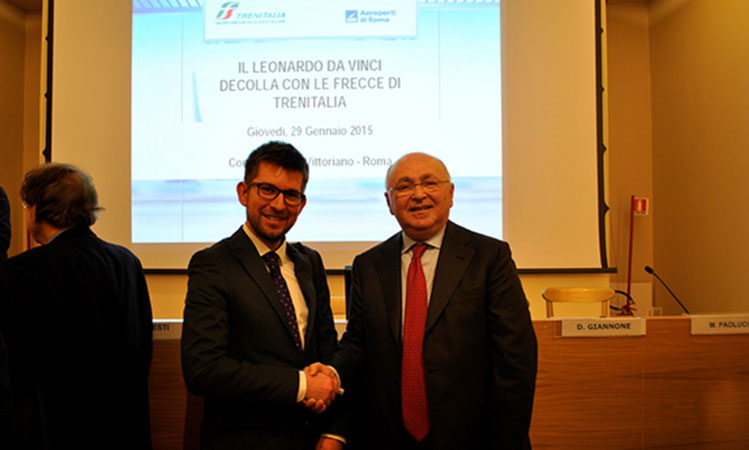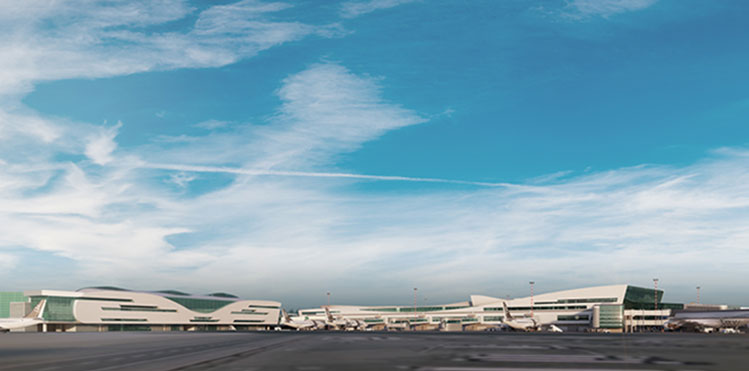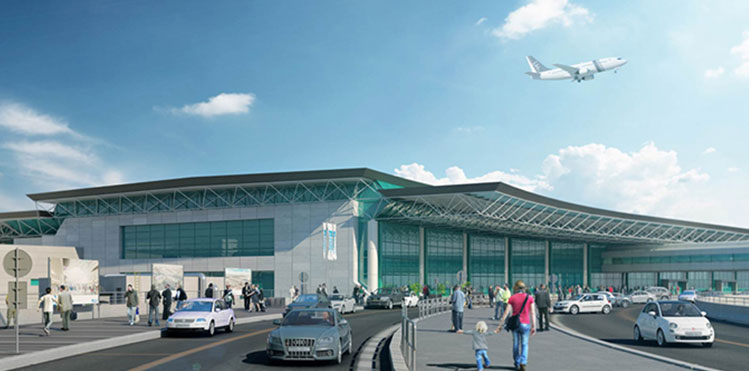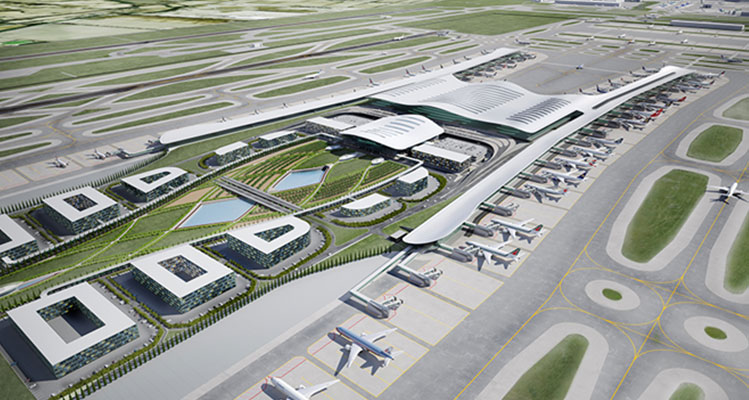Rome’s strategic position at the very heart of Italy means Fiumicino Airport has a vast catchment area, which is set to grow even further following the announcement of a new intermodal product. Significantly, Fiumicino is the first airport in Italy to integrate the air and rail transport systems, with Aeroporti di Roma (ADR) and Trenitalia – Italy’s state-owned main train operator – collaborating on a high-speed rail link that now connects Fiumicino with Bologna, Florence and Venice. In a wide-ranging interview with Airport Business in Rome, Lorenzo Lo Presti, CEO Aeroporti di Roma, discussed the impact of the new high-speed rail links, traffic growth, and ongoing infrastructure plans.

Airport Business’ Ross Falconer spoke to Lorenzo Lo Presti, CEO Aeroporti di Roma, at the launch of the new high-speed rail link connecting Fiumicino with Bologna, Florence and Venice.
“The integration of the two transport systems – air and rail – will confirm the role of Fiumicino as the country’s hub, and extends the offering of flights via Fiumicino to the areas of Bologna, Florence and Venice,” Lo Presti explained. “The citizens of these cities, who currently reach their intercontinental destinations through other European airports, such as Frankfurt and Paris CDG, will be able to plan their journey from the capital’s airport.”
The Rome airport system handled 43.6 million passengers in 2014 – a 6.4% year-on-year increase – with 38.6 million at Fiumicino and five million at Ciampino. Over 100 airlines operate regular services from Fiumicino to 200 cities worldwide and, with connections to 30 destinations in Italy, the airport is ideal for extensive feeding operations to long-haul flights. “With the new intermodal product, we can offer all the carriers an excellent ‘starting point’ to successfully launch long-haul services. Rome’s geographic position makes it an ideal gateway to the Mediterranean and Middle East,” Lo Presti added.

Aeroporti di Roma is investing €12 billion by 2044. The next key date is October 2016, when the Terminal 3 extension and new Boarding Area F at Fiumicino will be complete, adding a further 90,000sqm.
Major investment to 2044
ADR is working hard on an ambitious infrastructure plan, building on the successes of 2014, including strong traffic growth, the entry of new carriers at Fiumicino, and development of new routes. Lo Presti enthused that this is “only the starting point”. Traffic forecasts show growth to 100 million passengers at Fiumicino by 2044 – the end of the ADR concession.
There are three main elements to the infrastructure plans: a terminal revitalisation programme to increase the level of service and comfort for passengers in existing terminals; the Fiumicino South Completion Plan to double the terminal surface area, and upgrade the apron, taxiway systems and all airport subsystems, including loading bridges, baggage systems and technical plants; and the Fiumicino North Master Plan to extend the current airport boundary to the north with a new terminal, new runways, real estate development, and links to Fiumicino South. These expansion plans, alongside new road and rail connections, are fundamental to achieving the increased passenger traffic expected at Fiumicino.

The revitalisation of Fiumicino’s Terminal 1 will see a new check-in hall and new Pier A completed in 2019.
The total investment in the Rome airport system is huge – €12 billion by 2044. The next key date is October 2016, when the Terminal 3 extension and new Boarding Area F at Fiumicino will be complete, adding a further 90,000sqm to cater for both Schengen and non-Schengen flights.
“Directly related to the terminal extension, we will also complete new baggage systems for Terminal 1 and Terminal 3 to increase capacity and technology standards,” Lo Presti commented.
Attention will then turn to Terminal 1, where a new check-in hall and new Pier A will be completed in 2019. A new Terminal 4 will be the final step in the Fiumicino South Completion Plan. “This is only part of the plan – our attention is already oriented towards Fiumicino North. The extension of the current airport was already considered as a safeguarded area for development since the 1970s,” Lo Presti added.
Ciampino Airport is another fundamental asset for ADR, which last July delivered a new master plan to Enac – the Italian Civil Aviation Authority. This included the scope to reduce the number of flight movements, taking environmental constraints into account.

The Fiumicino North Master Plan will extend the current airport boundary to the north with a new terminal, new runways, real estate development, and links to Fiumicino South.
‘Rome to Expo Milano 2015’
ADR is also playing a vital role as a partner in Expo Milano 2015, the major global event taking place from 1 May to 31 October, and expects 500,000 extra passengers at Fiumicino, Italy’s main hub, during that time. The airport will have a dedicated exhibition space in Terminal 3, the main international terminal, hosting the countries participating in the Expo. A different country will be showcased every two weeks, and it will also be possible to purchase tickets for the event. “The participation of the capital’s airport in the ‘Rome to Expo Milano 2015’ project underlines the importance of the event and emphasises the role of Fiumicino as a privileged hub on long-haul connections to Milan and, therefore, Expo 2015,” Lo Presti said. “The T3 terrace will be the setting for the various countries involved, who will use the exclusive showcase of Fiumicino Airport to present their projects, their image, their products, and cultural and tourist excellence.”
Our time in Lo Presti’s company highlighted his passion for delivering a progressive and ambitious strategy across Fiumicino, which will significantly enhance the passenger experience, reinforce its position as the key Mediterranean hub, and further grow the long-haul market.







